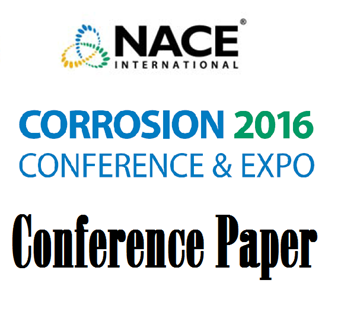Five case studies of corrosion related failures in alkanolamine acid gas removal systems including the following types of corrosion: Uniform, Pitting, Chloride Induced Crevice, Cavitation, and Microbiologically Induced Corrosion (MIC).
Product Number:
51318-11185-SG
Author:
Eric Teletzke / James Daughtry
Publication Date:
2018
$0.00
$20.00
$20.00
Aqueous alkanolamine regenerative solvent systems have been widely used to remove CO2 and H2S in refineries, gas processing plants, chemical plants, and liquefied natural gas (LNG) production facilities for over five decades. Industry advances in amine chemistry and equipment design have greatly reduced the corrosion risks in amine systems compared to the early monoethanolamine (MEA) systems employed in the 1950’s, however, some corrosion risks remain.
Corrosion threatens the integrity of plant equipment and places plant personnel at risk of chemical exposure and injury. Downtime, lost production, and equipment repairs resulting from corrosion cost the oil and gas industry over 1 billion dollars annually. Corrosion in amine systems due to high acid gas loadings and oxygen degradation products have been well documented in industry literature, but there are other causes of corrosion in amine systems which can have similarly destructive results.
This paper will present five case studies of corrosion related failures in alkanolamine acid gas removal systems including examples of the following types of corrosion: Uniform, Pitting, Chloride Induced Crevice, Cavitation, and Microbiologically Induced Corrosion (MIC). Identifying and correcting the causes of corrosion requires an interdisciplinary approach using multiple scientific tools including: chemistry, engineering design, metallurgy, and computer simulation. Each case study will explain the types of corrosion observed and the scientific concepts used to identify and resolve each type of corrosion.
Key words: Amine, Case Studies, Chloride Induced Crevice Corrosion, Uniform Corrosion, Amine Analysis, Inlet Separation, Microbiologically Induced Corrosion, Crevice Corrosion, Pitting Corrosion, Engineering Design, Carbonic Acid, Pump Cavitation, Pump Curve




